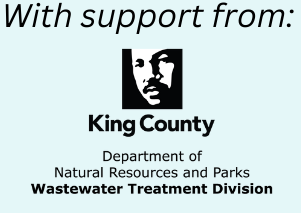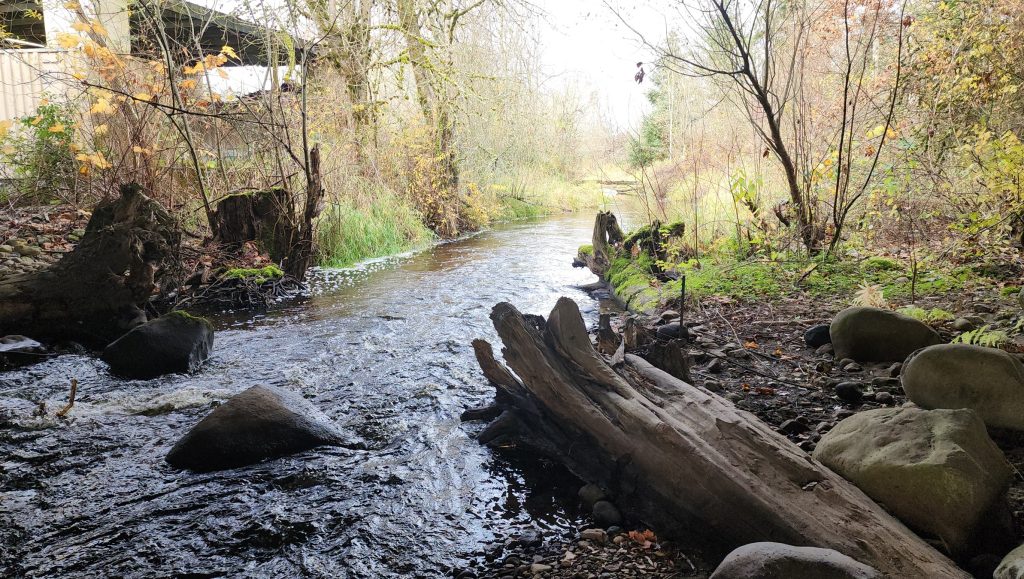
Evans Creek Stream Report
Evans Creek is in the Lake Washington watershed and drains about 9,800 acres of that watershed. It is 8.2 miles long and has a watershed of 9,800 acres. Evans Creek is categorized as Core Summer Salmonid Habitat. Water quality, while generally good, is challenged with elevated water temperatures, and low dissolved oxygen (DO) levels. Additional information about Evans Creek can be found at:
https://green2.kingcounty.gov/streamsdata/WaterShedInfo.aspx?Locator=S484.
Downstream from the monitoring site, in late summer of 2025 during the “fish window,” the City of Redmond plans to relocate Evans Creek away from several industrial properties into a new channel. The new channel will go through a wetland and a forested area. Waterfowl, shore birds, beavers and other wildlife are regularly observed in the area. Deer and coyotes have been observed during monitoring events.
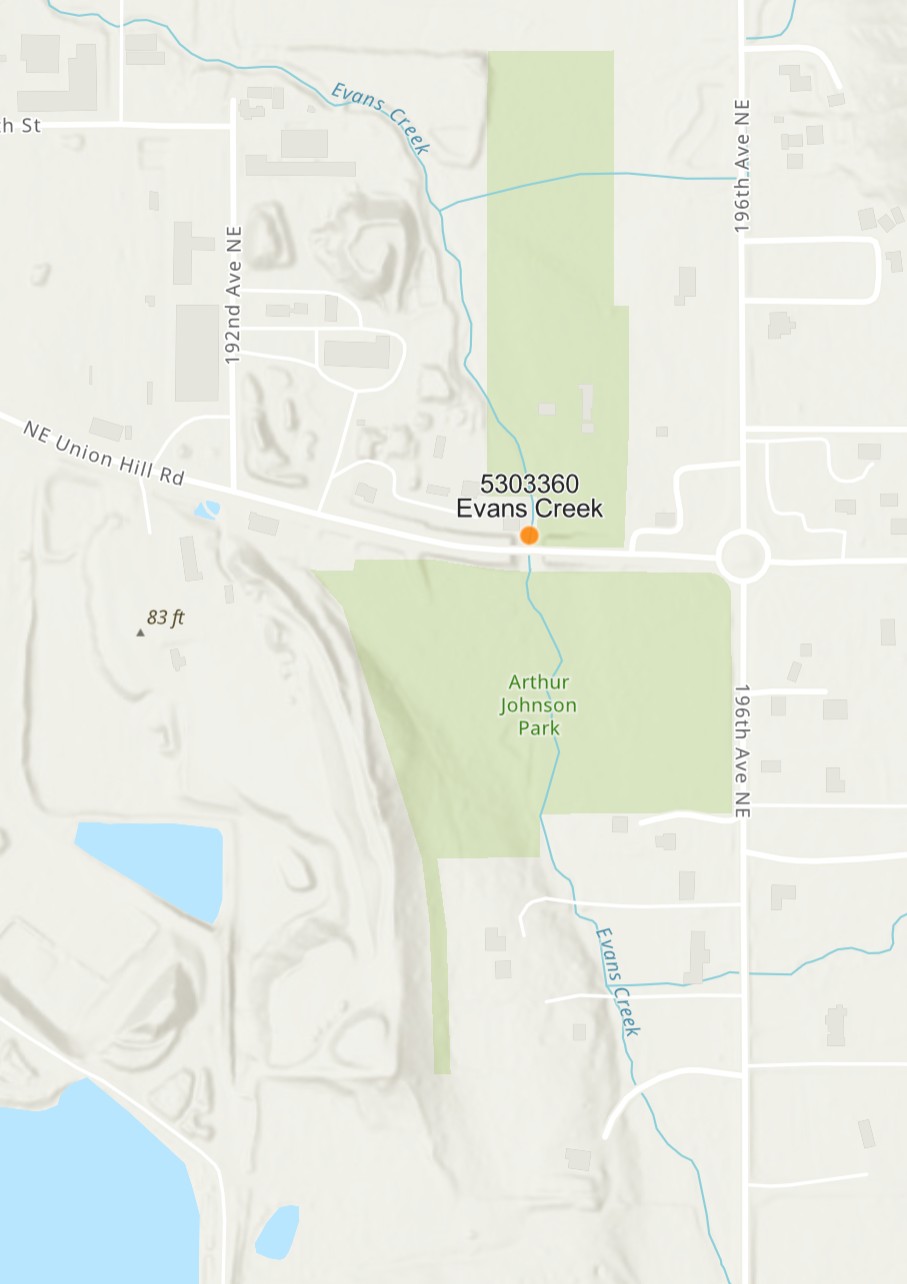

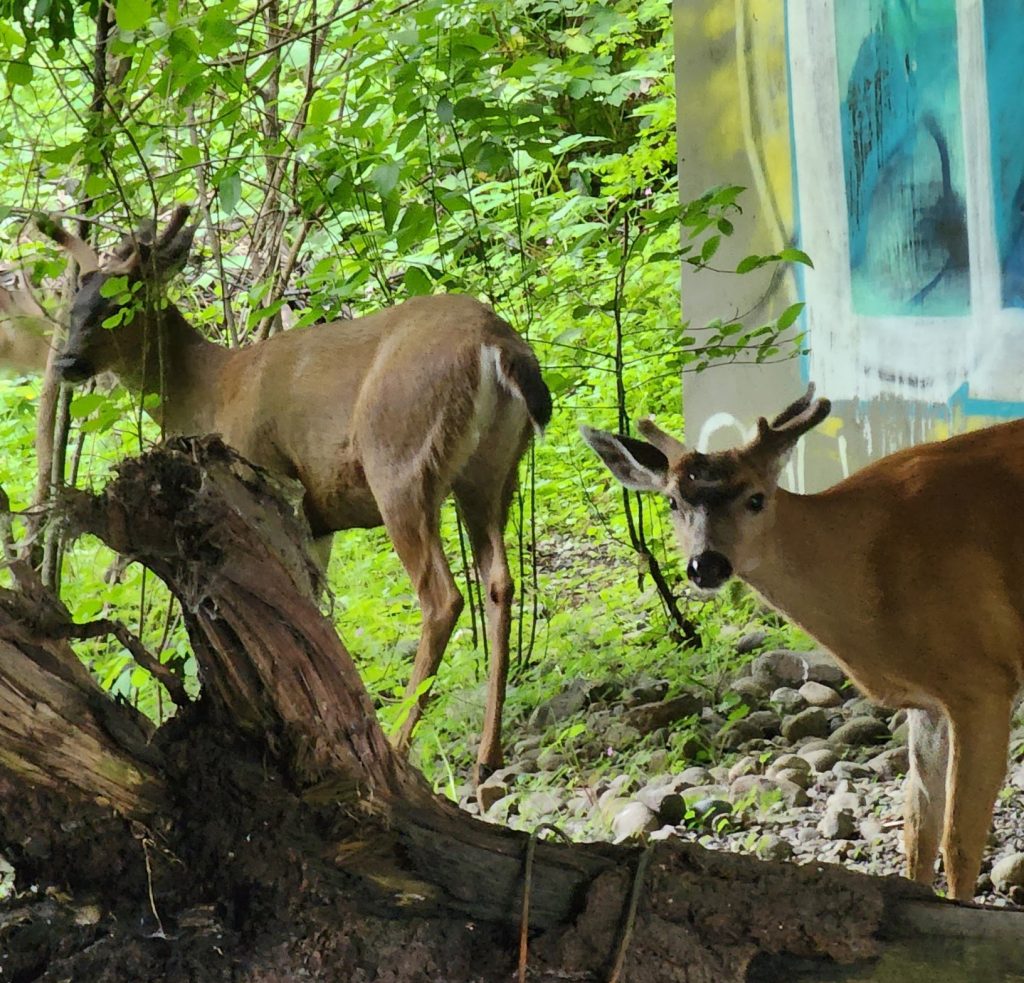
Monitoring Results
Data Collected by Sno-King Water Watch Volunteers.
Key Findings
- Stream temperatures commonly exceed 16 degrees C during August, which can be stressful for aquatic life and reduces dissolved oxygen (warm water holds less dissolved oxygen).
- Dissolved oxygen values are typically below the 10.0 mg/L standard which can be unhealthy for fish and other wildlife
- Bacteria (E. coli) concentrations are often above standard.
- Turbidity results have been low for the past 3 years of monitoring events, with one exception, indicating minimal erosion or sediment movement during monitoring.
- pH, alkalinity, and hardness tests are within a standard range during this sampling time period. Readings out of the normal range might indicate water pollution or contamination.
Evans Creek Water Watchers
Linda Sue Thompsen and Glenn Hayman lead the monitoring effort at this site. Linda Sue retired after 40 years in the field of developmental disabilities. She is an avid birder and is secretary for the Eastside Audubon Conservation Committee. Glenn is a retired Geologist and has 36 years of experience as a project and program manager investigating and remediating contaminated soil and groundwater sites. Linda Sue and Glen participate in legislative advocacy through Environment Washington. We have been monitoring water quality at this site since 2021.
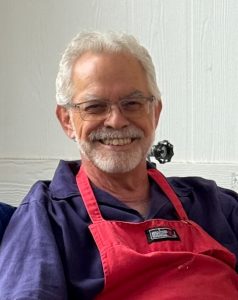
Glenn Hayman
Water Watcher and a member of the Sno-King Watershed Council.
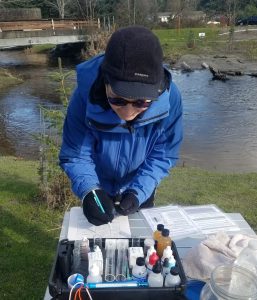
Linda Sue Thompsen
Water Watcher and a member of the Sno-King Watershed Council.
To learn more and train as a water monitoring volunteer email: snokingwatershedcouncil@gmail.com
Major support for our program comes from the King County Wastewater Treatment Division Waterworks grant program. Additional support is provided by the Cascade Water Alliance.

